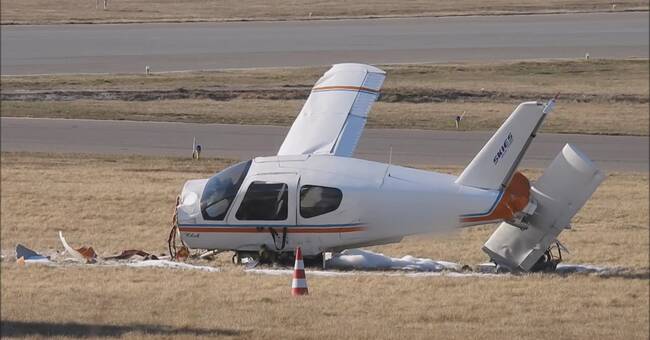It was in April last year that a small aircraft crash-landed at Skavsta after takeoff.
A student and an instructor sat on the plane.
The engine stopped at an altitude of about 500 feet, after which the instructor took control of the aircraft.
Both survived without serious injuries, but one wing of the aircraft was broken off and the muzzle detached from the fuselage.
Difficult turn - at low altitude
Now an analysis from the Swedish Accident Investigation Board shows that the aircraft engine stopped after the plane had taken off.
The pilot then made a 180-degree turn, a so-called "impossible turn", which, together with the engine crash, led to the crash.
According to the analysis, the "impossible turn" must be carried out at a good height.
If the maneuver is performed in an aircraft that has suddenly lost energy and flies low, the turn can turn a difficult situation into a tragic event, according to the analysis.
During the school flight over Skavsta, the aircraft had a low altitude at the same time as the pilot lacked sufficient knowledge and experience of carrying out the "impossible turn", the Accident Investigation Board writes.
According to the analysis, the school had routines for attempting to land straight ahead in the event of engine crashes at low altitudes, or deviating a maximum of 30 degrees in any direction.
However, the instructor found it impossible.
Deficiencies in education
The Accident Investigation Board Norway also states that the flight school, through the safety management system, has not identified the risks that can arise in the event of engine failure at low altitude.
One reason for this is that the European Union's Aviation Safety Agency, EASA, does not describe in its regulations how training should be carried out in the event of engine failure after take - off.
The flight school was at the time under the name Skies, later Tellus.
The school got rid of the permit to run the business last autumn.
This is because the Swedish Transport Agency found serious shortcomings in the school's educational material.

